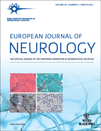TWINKLE gene mutation: report of a French family with an autosomal dominant progressive external ophthalmoplegia and literature review
Abstract
Background: Multiple mitochondrial DNA (mtDNA) deletions usually have a mendelian inheritance secondary to mutation in nuclear genes. One of these is the Twinkle gene whose mutation is responsible for autosomal dominant progressive external ophthalmoplegia (PEO). The number of reported cases with mainly myopathic symptoms and possible nervous system involvement related to Twinkle gene mutation is limited. We present a new French family of whom two members displayed myopathy and neuropathy associated with PEO, and we perform a clinical review in light of other observations reported in the literature.
Methods: The proband, one son and the daughter have been investigated. Southern blot analysis and long-range PCR assay have been performed from muscle biopsy specimens. Coding exons and flanking intron regions of polymerase gamma (POLG) and DNA helicase (Twinkle) genes were sequenced.
Results: Multiple mitochondrial DNA deletions have been found and sequencing of the Twinkle gene showed the change p.R374Q.
Conclusion: Two other families from the literature also had the R374Q mutation. Symptoms reported in association with this mutation were myopathy, peripheral neuropathy, dysarthria and/or dysphagia, respiratory insufficiency and parkinsonism. Respiratory insufficiency caused by chest wall weakness was reported in other families with different Twinkle gene mutations, and one might provide exercise intolerance, dysarthria and/or dysphagia as symptoms in favor of the diagnosis. Occurrence of impressive emaciation was a peculiarity in our family.




